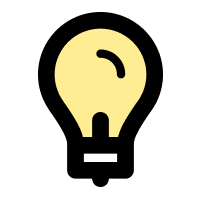Pulsd:
App Redesign
(Oct '24 - Nov '23)
Personal Project
Rapid Prototyping
App Ideation
Adobe CC

What is Pulsd? 🔎
Pulsd helps New Yorkers find coupons for their favorite restaurants, shows, and experiences. Pulsd describes itself as “everyone’s personal concierge” and “the leading resource for New Yorkers to discover their city.”
Why did I choose Pulsd? 🤔
I learned about Pulsd through social media. I love the idea, but the outdated UI hinders its efficient usage.
Pulsd needs to deliver strong UX and UI in order to compete with similar business directory apps such as Yelp, Groupon, and Beli.
Currently, Puls’d is outdated and overcluttered.
It struggles with efficient typographic hierarchy.
This compromises a user experience that is very information reliant.
To refresh Pulsd with a modern UI design, improve information retention through efficient text hierarchy, and create a seamless UX across multiple devices.

SOLUTION PREVIEW
The new design features a refreshing, modern UI that is consistent across platforms.
An improved user flow and new features allow NYC foodies to find relevant deals faster, creating a smoother app experience that improves checkout rates.
Double Diamond
The double diamond is used to guide my design process.


Early 20s urban foodies who have experience with venue-finding apps
User Testing
- Explore and find 3 deals you are interested in
- Find a deal for "brunch" for the coming weekend in SoHo
- Use the map feature to find a dinner deal that you are interested in
Think aloud protocol, walkthrough testing

I identified several pain points throughout the user journey. They mostly pertained 3 themes: information overload, confusing juxtaposition of features, and missing context.
"The text description for each deal has way too much info. It's too hard to read."
"I can't look for 'brunch' and use the map at the same time. It's really confusing to look for a certain type of deal in a specific neighborhood."
"I can't tell if the restaurants on this app are actually good. I would have to look them up on Yelp or Google first before I would buy anything."

Journey Map
Frustration peaks during the latter half of the search process, discouraging users from purchasing deals.
The goal is to redesign the Puls’d UI for users to easily find satisfactory deals, improving checkout rates.

Competitive Analysis
I conducted a competitive analysis on similar venue-finding and food delivery businesses such as DoorDash, Uber Eats, Yelp, TooGoodToGo, and Groupon.
I looked at both their mobile apps and desktop websites and made notes on what was working well from each app.
I looked at the content posted on the Puls’d Instagram and TikTok to identify the target demographic.
I checked review sites such as Google Reviews and Yelp to find detailed experiences from customers who had purchased Puls’d deals.
Using this research, I created 3 personas that represent the typical Puls’d customer.
Personas
Core Needs
Better navigation throughout the app
Better legibility +
text hierarchy
More nuanced filtering features
Brand definition + loyalty
New Features
These new features are meant to mitigate the toughest pain points, which occur during the search process, right before a user is about to purchase a deal.
Curated Home Page
↑legibility
The deals on the home page will be customized according to the user’s location, previous searches, and prior purchases.
Relevant, seasonal, and trending deals will be displayed first.
Favorites Feature
↑ brand loyalty
↑ organization
Puls’d heavily advertises account creation.
The redesigned “Favorites” feature will only allow registered users to save deals, therefore promoting account registration.
Map Filters
↑ filtering
↑ organization
A more nuanced filtering system and more elegant cross-feature relationships for the Map view will reduce the steps needed to find a suitable deal, therefore encouraging clickthrough and purchase rates.
Deal Category Tags
↑ legibility
↑ organization
Deals will be sorted into defining categories (eg “Brunch”, “Drinks”, “Dinner”, etc.
Deal cards will be tagged with these categories for easy skimming.
User Flow Diagram
I organized the structure for all proposed functionalities in a user flow diagram.
The mobile app currently lacks a navigation bar. I added one to give users access to all core functionalities, and help navigate different sections of the app.


Wireframe

Lo-Fi Prototypes
The Lo-Fi prototypes offer a smarter juxtaposition of features while capturing UI flavors from other popular food service + experience finding apps, making sure everything feels familiar.

Mid-Fi Prototypes
The main focus for the mid-fi prototype was the landing page and card design. Since most of the website featured cards, concise information presentation was crucial.
A map feature was considered for the home page but was removed after user testing for being distracting. Additionally, the neighborhood tag was eliminated from the card view as it was unnecessary.

Design System
I established a style guide and design system to create site components that ensured consistency across platforms and screens.

UI Update:
Card View
Modernity
The redesigned UI draws from the current logo’s modernity. It features semi-rounded corners and a vibrant, high-contrast color palette.
+
Consistency
The new desktop and mobile cards use the same design to ensure cross-platform consistency

05. Solution
🏠 Home/Browse
More Relevant Results
Seasonal and trending deals are displayed first to help the user find a suitable deal faster. A carousel banner shows highlights content and provides potential advertisement space.
Visual Engagement
A high contrast, vibrant page landing page keeps the user visually engaged.
Consistent UI
The same style guide and design system is used across platforms to ensure consistency and promote ease of use
More Legible Details
Deal details are broken up by subheadings and labels for easy skimming
x
🗺️ Map
Better Searching
Users can now look for deals on the map using the search bar, allowing them to find relevant deals faster.
Quick Selection Buttons
Quick selection buttons provide suggestions for users who aren’t sure what to search for.
More Filters
Adding multiple filters allows users to find relevant deals faster, which encourages clickthrough and purchase rates.
New Map Pins
Map pins are redesigned for better distinction when stacked
❤️ Favorites
New Favoriting System
Allowing users to save any deal, event, or business they like eases the mental load behind decision making.
More Registered Users
Only registered users can Favorite any event, deal, or business. This incentivizes account creation, which helps Pulsd collect crucial information about its user base.
Search & filter through favorites
Users can search through and filter favorites so that they can easily find something they have previously saved
Visual Cue for Expired Deals
Expired deals are greyed out, so that users can quickly tell that they’re gone
x
👤 Profile
One Page for All Information
Before, every section of the Profile page was a dropdown menu. Now, all information can be found and edited from one page.
Better Visual Hierarchy
The new profile page takes advantage of horizontal page space and visual contrast to display more information legibly
Purchase History
Users can find all their past deals on their profile page, so they can easily show the restaurant staff their Pulsd coupon
Easy Editing
Personal information is consolidated for easy editing and changes
Personas in Action:
Matthew
Matthew · 23 · Brooklyn, New York
Matthew wants to quickly find a deal for him and his friend to go after work. Since he works remotely from his apartment in Williamsburg, he wants somewhere close and convenient.
The new design takes takes advantage of quick-access buttons in order to efficiently bring the user to the search result they are looking for. Since the number of steps for the user to find the exact search result they are satisfied with is reduced, it may encourage a higher rate of add to cart and checkout.

Personas in Action:
Caroline
Caroline’s thought process is:
“Since mom and I will be in the city next weekend, I want to go to bottomless brunch with her near the hotel. I don’t want to spend too much money, since we’ll be going out for other meals.”
The new design offers several filtering options in Map view, which reflects users' preferences for deals. This allows Caroline to align her thought process with the filters. She can search for listings "near the hotel" tagged with "Bottomless," "Brunch," and "Deals for 2," within a budget of 2-3 dollar signs per person.
Caroline · 32 · Convington, Georgia
Caroline wants to book a bottomless brunch for her and her mother during the weekend of their trip to New York City.
Personas in Action:
Christine
Christine · 19 · Washington, D.C.
Christine wants to find a deal for eyelash extensions in Manhattan. She wants to make sure the experience will be positive, so she wants to cross-compare listings. She also takes into account the reviews the establishment has before booking.
Users in my research expressed uncertainty about whether a deal would be a good experience. They wanted to find the optimal point between price, savings, and deal quality.
In order to accommodate a choosy user such as Christina, a section of the deal listing page has been dedicated to show information about the host business. This section includes a small description of services, Yelp rating, price range, contact info, and location, allowing Christina to quickly assess the vibe.


If I continued to work on the project, my next steps would be to:
Continue User Testing
Distinguish the UI aesthetic
I would conduct user walkthroughs, think-aloud interviews, and focus groups to identify which features users like, as well as where new pain points have been created.
The redesigned UI features a sleek, high-contrast, high-saturation design inspired by competitor delivery apps to reduce cognitive load.
To further differentiate the app, I would try adding unique animations and subtle vector art. These can also make the app more fun and engaging to interact with.
In this case study, I took on the challenge of fully redesigning the user interface for an existing app. I had two goals in mind: meeting the client’s functional needs, while creating a seamless and enjoyable experience for users.
Drawing on my business background, I introduced features designed to boost clickthrough and purchase rates. I constantly asked myself, “What would make users excited to add items to their cart?” and “How should these features look, and where should they go to feel intuitive?”
A key challenge was balancing the app’s information hierarchy. User testers found the original app cluttered and overwhelming, so I prioritized content carefully. I used font size, weight, hue, saturation, and contrast to make the information clear and easy to navigate. This challenge posed especially daunting when trying to design for both mobile and desktop platforms. I tried my best to have design components translate cohesively, while also being optimized for the specific viewing screen.
Another challenge was creating an aesthetic that felt fresh yet familiar, and resonated with users of all ages. I looked to successful competitor apps for inspiration, crafting an approachable design while experimenting with colors and elements to give the app its own unique personality.
What I loved most about this project was the opportunity to connect users with my hometown, New York City. Adding features like a category for seasonal holiday events made the app feel more personal and meaningful. I also enjoyed the challenge of designing a cohesive experience across mobile and desktop, and finding creative ways to make each platform shine.
The redesign of Puls’d modernizes the UI, displays information efficiently, and create a seamless UX across multiple devices.
It also introduces new core features that encourage the user to click through to the purchase screen, which helps generate product value.














































